
The Mamas & the Papas were a folk rock vocal group which recorded and performed from 1965 to 1968. The group was a defining force in the music scene of the counterculture of the 1960s. Formed in New York City the group consisted of Americans John Phillips, Cass Elliot, and Michelle Phillips, and Canadian Denny Doherty. Their sound was based on vocal harmonies arranged by John Phillips, the songwriter, musician, and leader of the group, who adapted folk to the new beat style of the early 1960s.
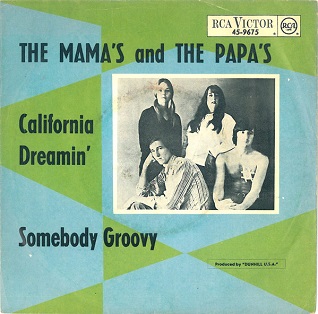
"California Dreamin'" is a song written by John Phillips and Michelle Phillips in 1963 and first recorded by Barry McGuire. The best-known version is by the Mamas & the Papas, who sang backup on the original version and released it as a single in December 1965. The lyrics express the narrator's longing for the warmth of Los Angeles during a cold winter in New York City. It is recorded in the key of C-sharp minor.

Wilson Phillips is an American pop vocal group formed in Los Angeles in 1989. The group consists of sisters Carnie and Wendy Wilson, the daughters of Brian Wilson of The Beach Boys, and Chynna Phillips, the daughter of John and Michelle Phillips of The Mamas & The Papas.
Sunshine pop is a subgenre of pop music that originated in Southern California in the mid-1960s. Rooted in easy listening and advertising jingles, sunshine pop acts combined nostalgic or anxious moods with "an appreciation for the beauty of the world". The category largely consists of lesser-known artists who imitated more popular groups such as the Mamas & the Papas and the 5th Dimension. While the Beach Boys are noted as prominent influences, the band's music was rarely representative of the genre.

Up – Up and Away is the debut album by the American pop group the 5th Dimension, released in 1967. The title track was released as a single and became a major pop hit.
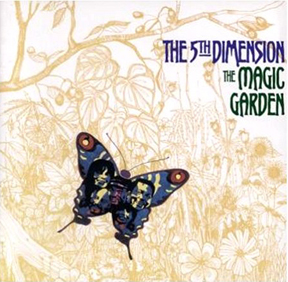
The Magic Garden is the second album by the American pop group the 5th Dimension, released in 1967. A concept album, it tells the story of a couple's love and the end of their relationship. In more recent discussions of the album, that love affair is said to be about Jimmy Webb — who composed all but one of the album's songs — and his time with singer and then-girlfriend Susan Horton. The album's one track not credited to Jimmy Webb, a cover of Lennon–McCartney's "Ticket to Ride", was originally intended for the group's debut album, Up, Up and Away.

Portrait is the fifth album by the American pop group the 5th Dimension, released in 1970. This is the group's first album for Bell Records, having switched from the Soul City Records label. The cover features an impressionistic portrait by famous artist LeRoy Neiman.

"Baby I Need Your Loving" is a 1964 hit single recorded by the Four Tops for the Motown label. Written and produced by Motown's main production team Holland–Dozier–Holland, the song was the group's first Motown single and their first pop Top 20 hit, making it to number 11 on the US Billboard Hot 100 and number four in Canada in the fall of 1964. It was also their first million-selling hit single.

"Medley: Aquarius/Let the Sunshine In " is a medley of two songs written for the 1967 musical Hair by James Rado and Gerome Ragni (lyrics), and Galt MacDermot (music), released as a single by American R&B group the 5th Dimension. The song spent six weeks at number one on the US Billboard Hot 100 pop singles chart in the spring of 1969 and was eventually certified platinum in the US by the RIAA. Instrumental backing was written by Bill Holman and provided by session musicians commonly known as the Wrecking Crew. The actual recording was novel at the time, being recorded in two cities, Los Angeles and Las Vegas, and being mixed down to a final version later.

"Dancing in the Street" is a song written by Marvin Gaye, William "Mickey" Stevenson and Ivy Jo Hunter. It first became popular in 1964 when recorded by Martha and the Vandellas whose version reached No. 2 on the Billboard Hot 100 chart and peaked at No. 4 in the UK Singles Chart. It is one of Motown's signature songs and is the group's premier signature song. A 1966 cover by the Mamas & the Papas was a minor hit on the Hot 100 reaching No. 73. In 1982, the rock group Van Halen took their cover of "Dancing in the Street" to No. 38 on the Hot 100 chart and No. 15 in Canada on the RPM chart. A 1985 duet cover by David Bowie and Mick Jagger charted at No. 1 in the UK and reached No. 7 in the US. The song has been covered by many other artists, including The Kinks, Tages, Black Oak Arkansas, Grateful Dead, Little Richard, Myra and Karen Carpenter.

Lester Louis Adler is an American record and film producer and the co-owner of the Roxy Theatre in West Hollywood, California. Adler has produced and developed a number of iconic musical artists, including The Grass Roots, Jan & Dean, The Mamas & the Papas, and Carole King. King's album Tapestry, produced by Adler, won the 1972 Grammy Award for Album of the Year and has been called one of the greatest pop albums of all time.
"Dream a Little Dream of Me" is a 1931 song with music by Fabian Andre and Wilbur Schwandt and lyrics by Gus Kahn. It was first recorded in February 1931 by Ozzie Nelson and His Orchestra, soon followed by Wayne King and His Orchestra with vocals by Ernie Birchill. A popular standard, it has seen well over 400 recorded versions.
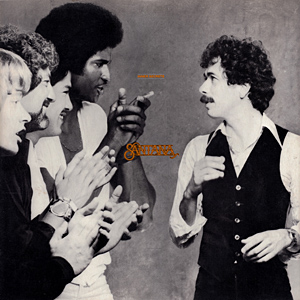
Inner Secrets is the tenth studio album by Santana. It was released in 1978 and, unlike the fusion of Latin, jazz, rock, blues and spirituality that characterized previous records, it was considered an album-oriented rock album.
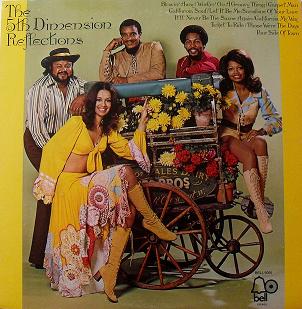
Reflections is a compilation album by the American pop group the 5th Dimension, released in 1971. It contains songs from while the band was recording for Soul City Records. It includes four songs that were originally released as A-side singles, although only one was a Top 20 hit. Bell Records released Greatest Hits on Earth the following year, which would include The 5th Dimension's biggest hits from both current label Bell Records and prior label Soul City Records.
"Dedicated To The One I Love" is a song written by Lowman Pauling and Ralph Bass that was a hit for the "5" Royales, the Shirelles, the Mamas & the Papas and Bitty McLean. Pauling was the guitarist of the "5" Royales, the group that recorded the original version of the song, produced by Bass, in 1957. Their version was re-released in 1961 and charted at number 81 on the Billboard Hot 100.

"Monday, Monday" is a 1966 song written by John Phillips and recorded by the Mamas & the Papas, using background instruments played by members of the Wrecking Crew for their 1966 album If You Can Believe Your Eyes and Ears. Denny Doherty was the lead vocalist. It was the group's only #1 hit on the U.S. Billboard Hot 100.
"California Soul" is a funk-soul tune written by Ashford & Simpson, issued originally as the B-side of the Messengers' single "Window Shopping" in 1967 under the Motown group of labels.
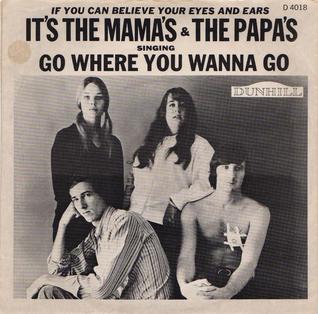
"Go Where You Wanna Go" is a 1965 song written by John Phillips. It was originally recorded by the Mamas & the Papas on their LP If You Can Believe Your Eyes and Ears and given limited release as a single. However, the record was withdrawn, and its A-side was reassigned to "California Dreamin'". "Go Where You Wanna Go" later became a hit for the 5th Dimension.

Greatest Hits is the first compilation album by American pop group the 5th Dimension, released in 1970 by Soul City. It includes all but two of their charting singles to date: "Go Where You Wanna Go", their first Top 20 record in the USA, would appear on the follow-up compilation, The July 5th Album, released later that year, while "Another Day, Another Heartache" was not included on either compilation. Greatest Hits and The July 5 Album were the final two album releases for Soul City Records' distribution deal with Liberty Records. The 5th Dimension subsequently signed with Bell Records. The album peaked at no. 5 on Billboard's Top LP's chart in the summer of 1970, achieving gold record status.

The Mamas & the Papas were a vocal group from Los Angeles, California that was active from 1966 to 1969. Their discography consists of a total of five albums and 17 singles, six of which made the Billboard top ten, and sold close to 40 million records worldwide. Monday, Monday hit #1 on the Billboard Hot 100 chart in March 1966 and California Dreamin' was the top song on the Billboard Year-End Hot 100 singles of 1966.
















